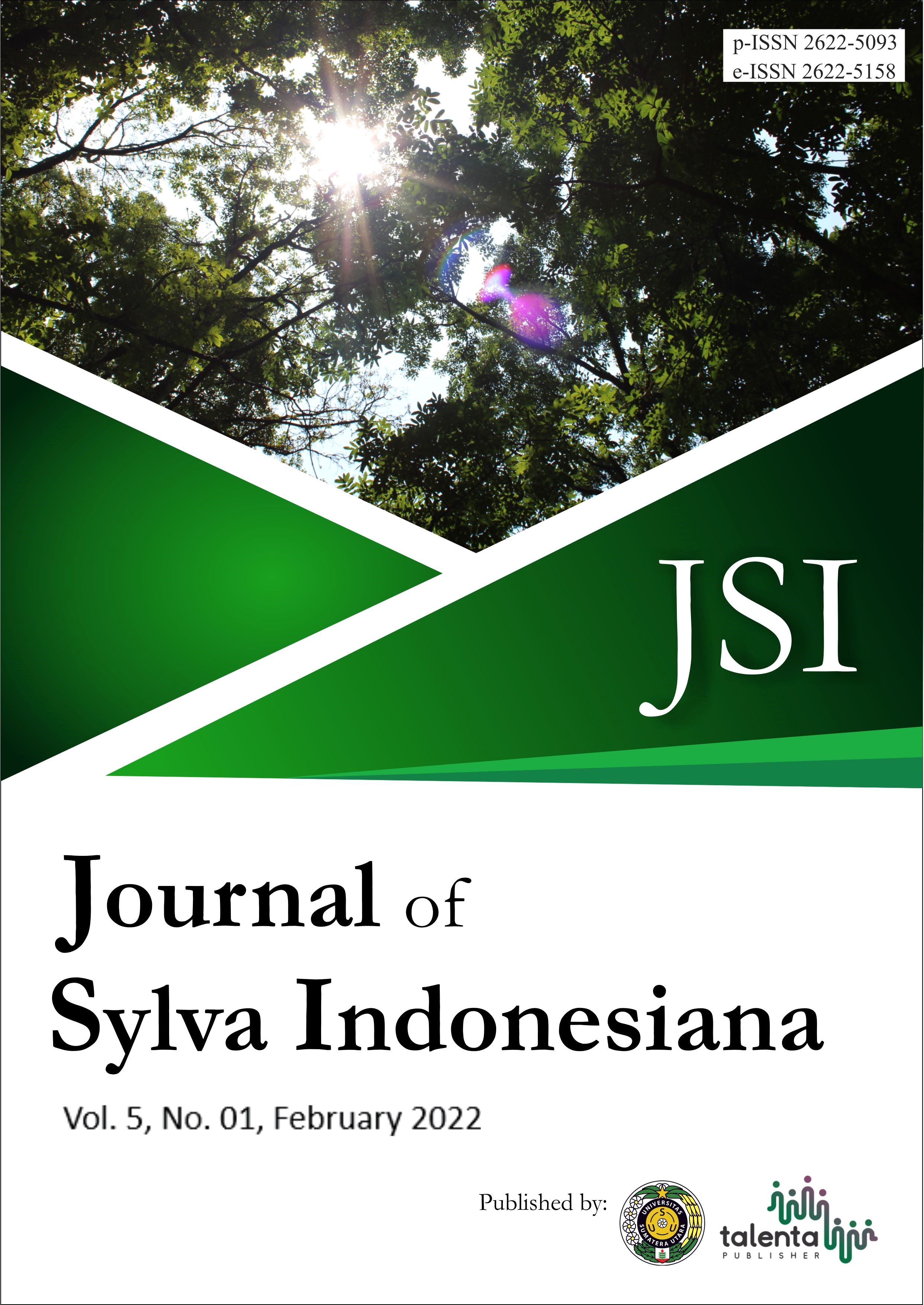Mangrove Utilization as Sources of Ruminant Feed in Belawan Secanang Subdistrict, Medan Belawan District
DOI:
https://doi.org/10.32734/jsi.v5i01.6186Keywords:
Animal unit, Carrying capacity, Mangrove, North Sumatra, Ruminant feedAbstract
Mangroves hold several benefits, one of which is barriers from marine abrasion, food sources, aquatic habitats, carbon sinks and storages, places for education and training, ecotourism sites, and sources of ruminant feed. This study aimed to determine the potential of mangroves as sources of ruminant feed and its carrying capacity for sustainable mangrove utilization. The research was conducted in Belawan Sicanang Subdistrict by using purposive sampling for vegetation analysis and questionnaire method. Avicennia marina, Bruguiera sexangula, B. gymnorrhiza, Nypa fruticans, Rhizophora apiculata, Sonneratia alba, and Thespesia populnea were among the mangrove species used by the farmer. The total capacity of mangrove species as ruminant feed in the animal unit (AU) was obtained as dry matter (835.48 AU), crude protein (481.24 AU), and total digestible nutrient (873.77 AU). The carrying capacity of mangroves as represented in the form of dry matter (13.74), crude protein (7.91), and total digestible nutrient (14.36), were categorized as safe. In addition, the potential additional populations based on the safe level of carrying capacity (2.5) was 273 AU, based on crude protein for 131 AU, and based on total digestible nutrients for 288 AU.
Downloads
Downloads
Published
How to Cite
Issue
Section
License
Copyright (c) 2022 Journal of Sylva Indonesiana

This work is licensed under a Creative Commons Attribution-NonCommercial 4.0 International License.



















